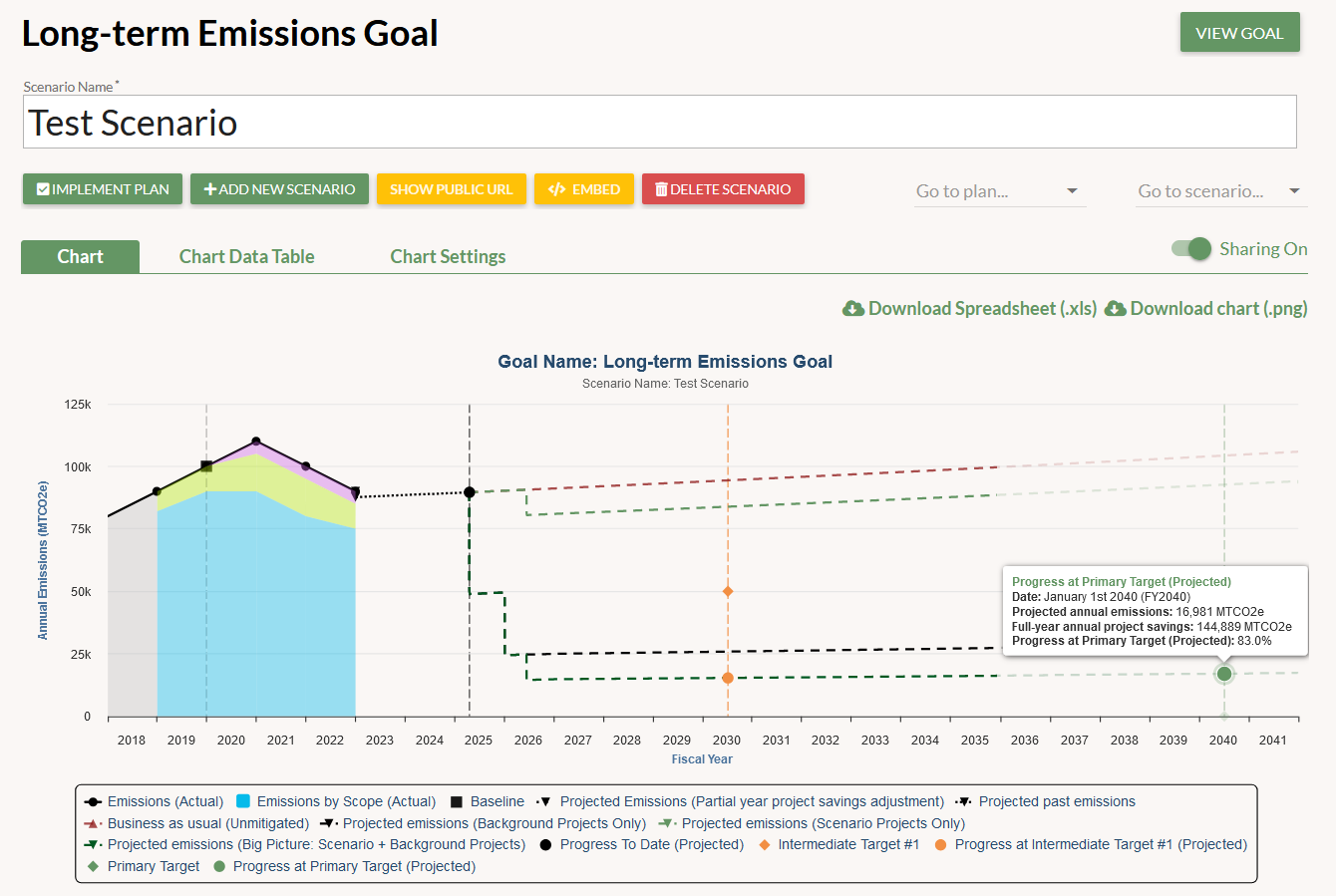GRITS not only allows you to track your sustainability projects’ impacts in one place but also to place those projects into the context of your institution’s decarbonization and resource use reduction goals. A suite of planning features called GRITS Goals can help you turn your sustainability targets into actionable plans.
Creating actionable emissions, energy, water & waste reduction plans
Setting an emissions reduction target is one thing, but achieving it is another thing entirely. While planning should start from a 30,000-foot view, for your plan to be actionable you’ll eventually need to determine which projects you’ll undertake to achieve your target. GRITS empowers you to plan on this “action level.”
As a planner, you might be setting goals across multiple buildings, identifying which projects are most impactful or provide the greatest impact per dollar invested, figuring out the investment timeline for the work involved, and more. With so much data and several moving parts to keep track of, trying to do all of this planning in spreadsheets may prove infeasible.
GRITS makes the process much easier. You just establish a baseline and a primary reduction target (with any number of intermediate targets in between) at either the institution-wide, campus/site, or individual building level, and then create different possible pathways (what we call “scenarios”) to achieve your goal.
Quickly search through your project data to find projects that can get you a significant portion of the way to the target, and add them into your scenario. You can filter by one or more project-level attributes like annual carbon/energy/water/waste savings, cost, financial savings, return on investment, and more.
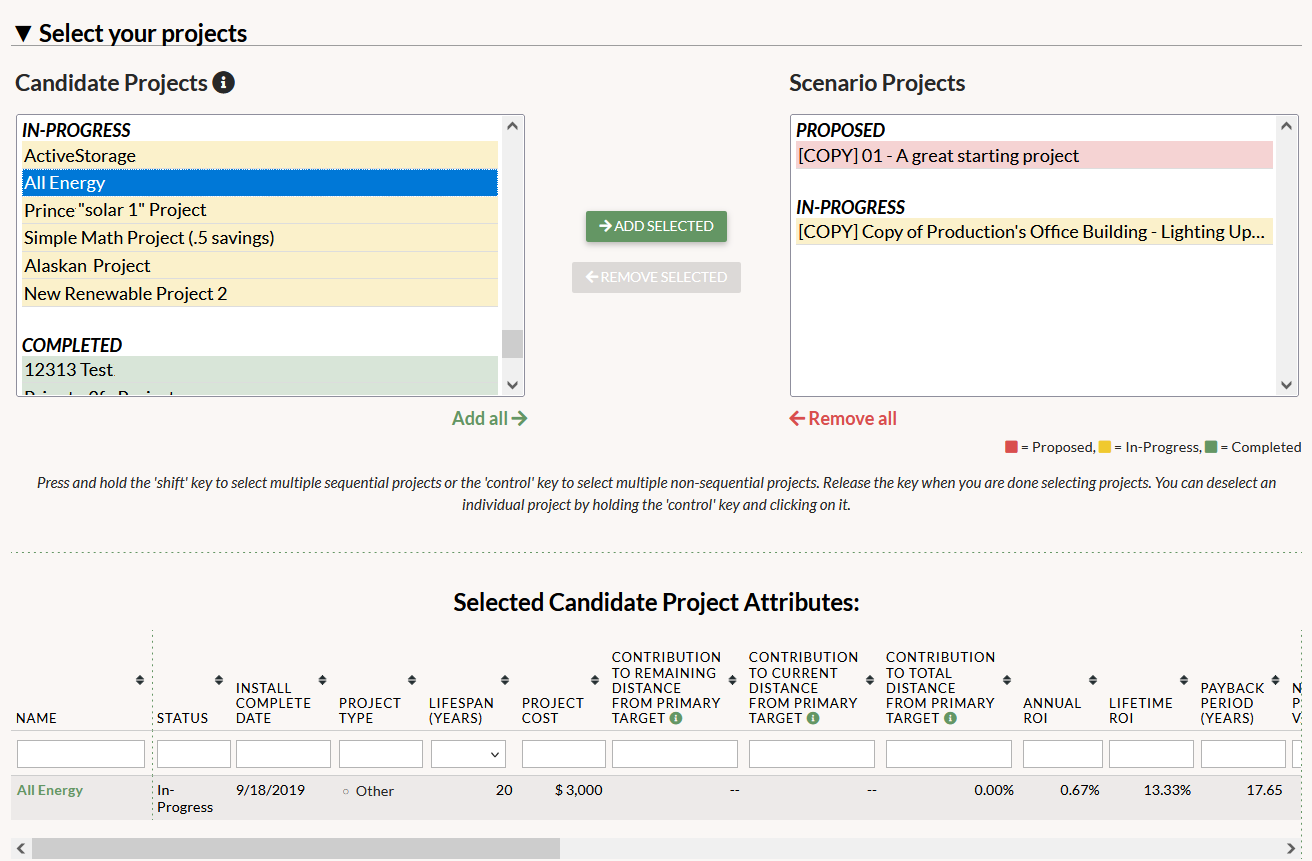
When you add projects into your scenario, GRITS will display their impact in your scenario chart. You’ll see how far they get you towards your intermediate and primary targets. You can adjust your projects’ implementation date to see the effect of either delaying or speeding up your timeline.
Understand and track the expected progress, costs and savings, resource reduction impacts, and financial metrics for your scenario projects
GRITS calculates the progress towards your targets that your projects are expected to achieve. You’ll also see a breakdown of the anticipated emissions/energy/water/waste savings for your bundle of scenario projects and a number of financial metrics, including their payback period and return on investment.
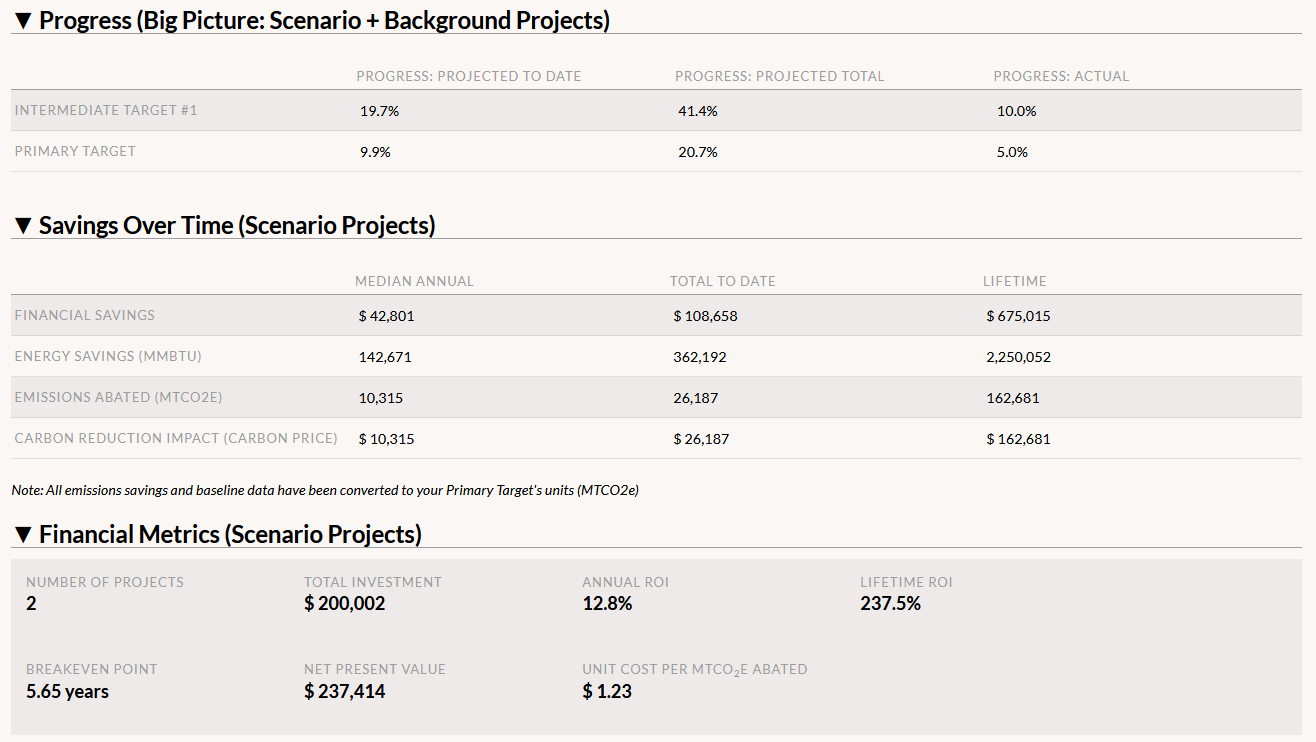
All of the projected cash flows for your scenario (both project investments and financial savings resulting from reduced resource consumption) appear in a central table.
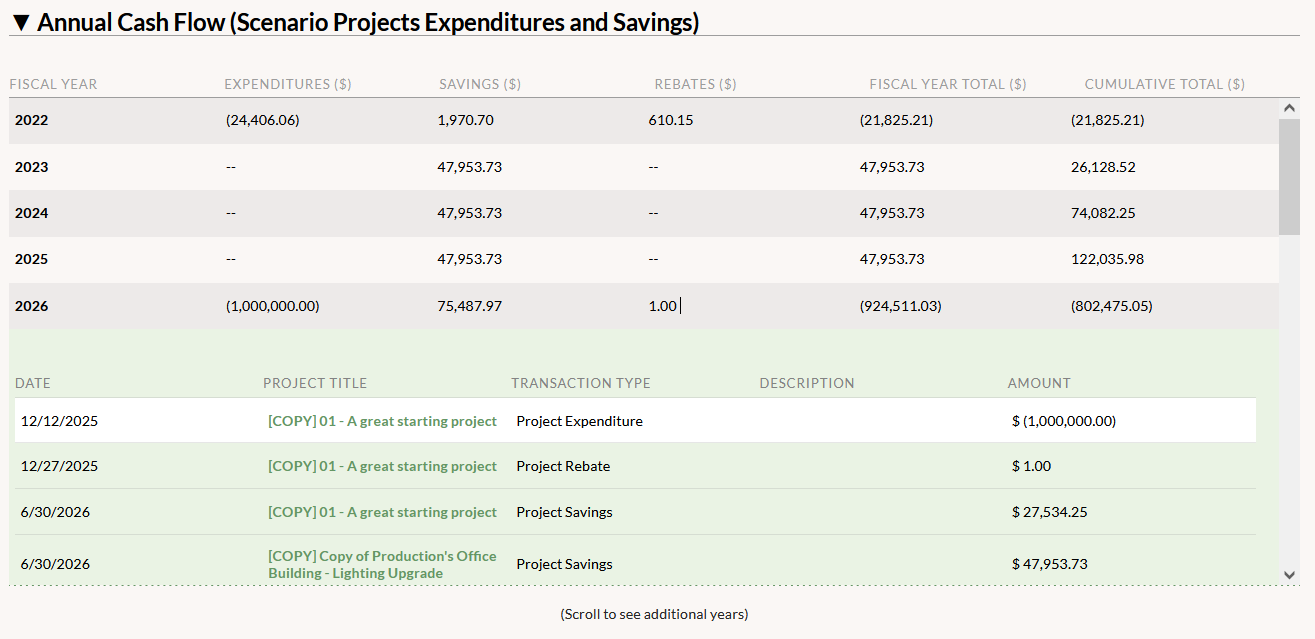
Share your plans and progress towards your goals
GRITS also makes it easy to share your scenarios. Each scenario has a custom link that you can share with others to provide access to a read-only version of the page, even if they don’t have access to GRITS. You can even post it publicly to share your scenario with a wider audience.

You can also create a customized, interactive dashboard for any scenario and embed it into a webpage. Each of these sharing options will update whenever your scenario changes. Finally, you can download your scenario data into a spreadsheet to work with the numbers any way you like. (See all the sharing options GRITS provides!)
These sharing features can facilitate much more sharing of your plans with decision-makers and/or the public, and make it easier to meet any reporting requirements you have.
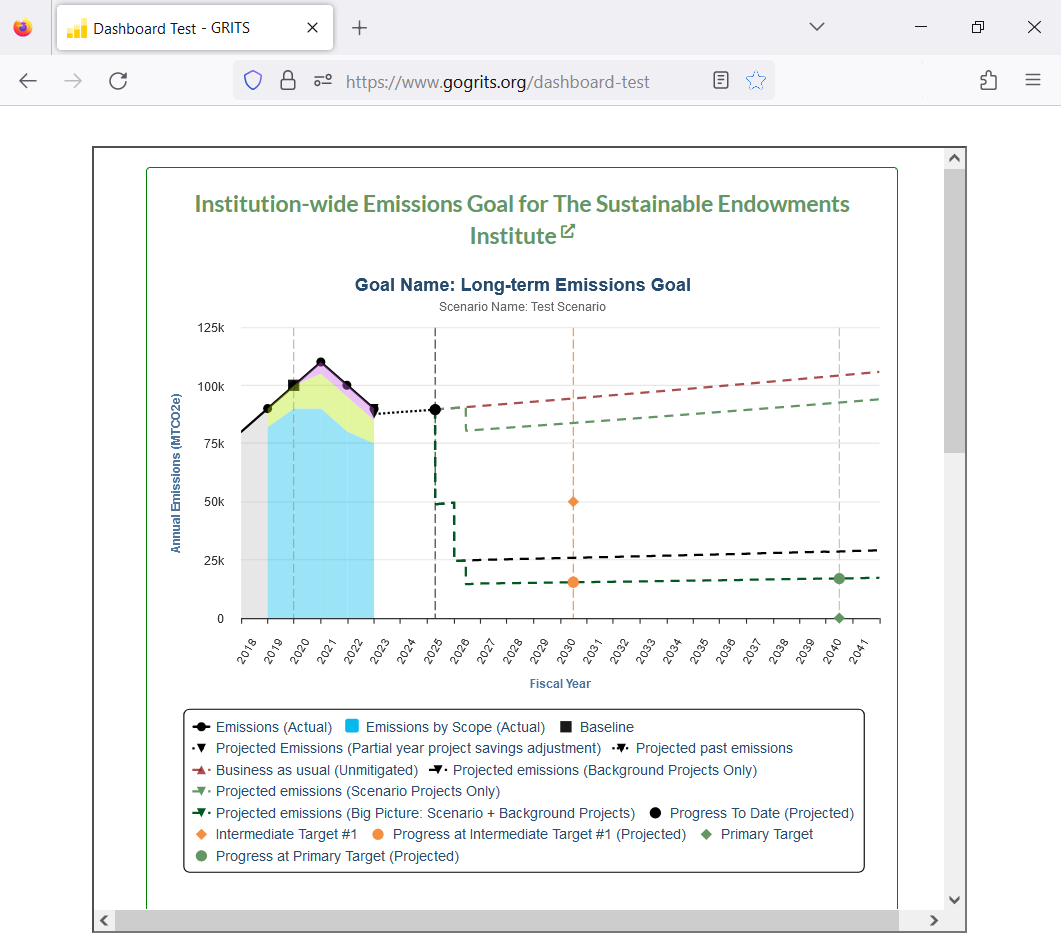
GRITS Goals helps you build the kind of actionable plans that you need to achieve your institution’s emissions/energy/water/waste reduction targets. The platform’s intuitive and standardized interface illustrates how far your scenarios get you to your goals, and can promote understanding and collaboration among different stakeholders and decision-makers. You can create as many scenarios as you need to determine the right path forward. Rather than relying entirely on third parties to plan for the future, empower your own team to do this work with GRITS.

